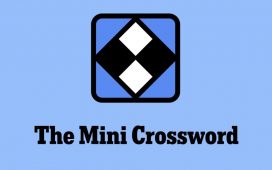
When it comes to talking about accessibility and video games, the loudest voices are often those who never had to worry about the subject in the first place. The ability to plop down on the couch at the end of the day, pick up a controller, and play any title on the market is often taken for granted by players who don’t have disabilities. For players that do, added customization options can mean the difference between finding their next beloved title and being unable to enjoy it at all.
These potentially pivotal customizations are incorporated into titles by developers who don’t personally require them, which can (and has) led to some hits and misses, from illegible subtitle styles to difficulty settings that fail to tailer crucial elements of combat. It’s why so many companies have been turning to accessibility advocates and consultants in recent years, and the results have been promising so far.
Lauded titles range from AAA behemoths like Assassin’s Creed Odyssey and Far Cry: New Dawn to indie darlings like Celeste, applauded for their strides in advancing both the quality and quantity of these options. Still, I couldn’t help but wonder if the players personally relying on them had any notes for improvements. With that in mind, I asked gamers with disabilities if they were given the chance to design a game with their dream accessibility features, what would it look like?
Two of the forces behind Can I Play That, a site that specializes in game reviews and commentary from the perspective of disabled gamers, understandably had a lot to say on the subject. Site founder Courtney Craven adores games with melee combat, but mashing trigger and bumper buttons on a controller can exasperate her lupus symptoms. Remapping controls or allowing these inputs to trigger continued attacks rather than a single charged one makes enjoying these titles a lot less painful. “That would eliminate so much joint stress for me in my fingers,” she told Digital Trends.
Can I Play That’s mobility and accessibility editor, Anthony Martins, echoed this call for remappable buttons. He added that these customized controls should also extend to non-combat functions like accessing menus and interactions, with additional options to toggle actions and sensitivity settings. And these accommodations should be universal whether the player prefers using a keyboard, gamepad, or mouse.
Bethesda games and Borderlands 2 are perfect examples of control options that adjust to a wide array of disabilities, according to Johnny Quad. On his site Johnny Quad Reviews, he analyzes games from the point of view of someone who experiences paralysis in all four limbs.
“With so many varying degrees of disability it’s hard to find the right fit.”
“With so many varying degrees of disability it’s hard to find the right fit,” Quad said. For games that don’t allow all controls to be remapped, the result is often the same: “A lot of missed button hits. A lot of respawns.”
For those with hearing impairments, the quality of a game’s subtitles can make or break the experience. Chris “Phoenix” streams on Twitch under the moniker DeafGamersTV, and he personally would love to see more options to customize how these subtitles appear. Players should be able to tailor everything from a font’s size to its color and especially its style. “Game devs sometimes get too fancy with their font of choice that can be unreadable to many people,” he told Digital Trends.
Directional or radial sound indicators like the one Far Cry: New Dawn incorporated, are also invaluable. Elizabeth Garcia, social media manager for the But Why Tho? podcast, called the game “revolutionary” for this feature as well. She similarly applauded the Tomb Raider series’ difficulty settings, which make combat more manageable without sacrificing the complexity to its puzzles that often leaves players tearing their hair out.
For accessibility expert Cherry Rae, the question becomes a bit more complicated. As both a specialist in the field and a disabled gamer, they believe all additional settings open up a title to someone, so it’s incorrect to denote some as “accessibility options” and others as simply “options.”
“The dream for me is that games are made with the entire spectrum of the player base in mind.”
“The dream for me is that games are made with the entire spectrum of the player base in mind, and as such, empower players as much as possible to adapt the experience to accommodate their own needs.”
Inverted controls and volume sliders are good starting points for accommodating both physical and cognitive disabilities, but ultimately, a complete list of options depends on a game’s genre and the designer’s intentions for the player.
“So, in short, the ideal game covers all the options possible within the framework of that game,” Cherry explained.
Of all the proposed customizations disabled players suggested, one came up again and again: Developers — Please make quick-time events optional. Few players enjoy them, disabled or not, if the gaming community’s reoccurring griping anytime a title abuses QTEs is any indication.










